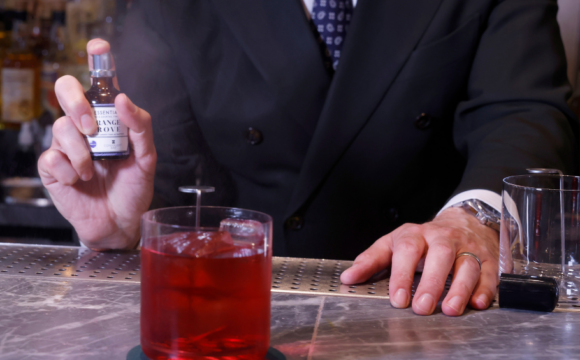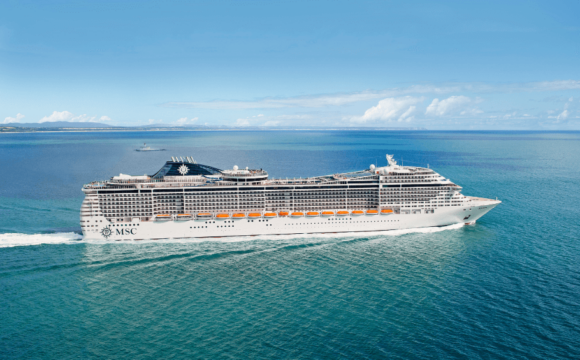Margate is having a moment. The British seaside town hasn’t been so popular since its hey-day as a coastal bolt hole for Regency dandies who had tired of London. Its phoenix-like regeneration is thanks to a cultural renaissance and the reopening of Dreamland, ‘the UK’s original Pleasure Park.’
Dreamland got its whimsically romantic name back in the 1920s, although people had been enjoying the amusement rides there from as early as 1880. It eventually closed down in 2005, a sorry, almost derelict site and just a fraction of the attraction it once was. But thanks to creative input from designer, Wayne Hemingway, the funpark reopened to great fanfare in July this year, with a knowing nod towards its provenance thanks to vintage fair rides, old-fashioned side shows and even a roller disco.
One my last day of a three day visit to the East Kent resort earlier this year, I spotted fashion designer Dame Vivienne Westwood, who had arrived in town in the battle bus of the East Kent Reality Party (it was just prior to the general election). Somehow, the sight of this former-punk-turned-Dame summed up Margate perfectly – a untamed and rough-around-the-edges post-war force of nature that has become gentrified to the extent that it now enjoys national treasure status.
Margate still has those important seaside tourist trappings, including gaudy shops selling rock and kiss-me-quick hats, postcards and souvenir fridge magnets, as well as the boarded up shops familiar to all British towns, but it also offers something fresh, new and fun.
Its regeneration started in 2011 with the opening of the Turner Contemporary gallery – named after the artist JMW Turner who went to school in Margate and continued to visit and live there throughout this life – when the town started to become known for its arty sensibilities and hipster residents.
What appeals to many of them is the warren of narrow cobbled Georgian streets known as the Old Town where there you’ll find vintage store after vintage store, especially along King Street, with the charmingly-named Madam Popoff Vintage located beside King’s Emporium with its jumble of treasure from kitsch prints to 1960s novelty salt and pepper sets, both of which are just across the road from the vintage menswear at Breuer & Dawson.
Spent all your spare cash on 1970s Jackie annuals and art deco lampshades? Then stop off for a cuppa at Lady Tesla’s Loose Leaves and Mud tea shop – it’s not just the boutiques that have ingenious names in this town!
The vintage stores and their retro-loving customers have also given rise to regular themed events such as annual Margate Soul Weekend, which now stretches to six days over the summer and features a line-up of legendary DJs and bands. But to think of Margate as a mini-Brighton doesn’t do it justice – Margate, although smaller, is to my mind much better, friendlier and fun.
It also offers a growing number of great eateries, including the acclaimed Anglo-Indian Ambrette, and the restaurant at the Sands Hotel – ask for a table in front of the window and watch as the sky turns deep shades of orange and yellow as the sun goes down over Margate Sands.
The Sands has a story much like Dreamland, in that it was a former famous landmark beside the sea that fell into disrepair and, thanks to an injection of cash, has been reborn as one of the most desirable spots in town. A former hotel, and popular at the end of the 19th century, it is once again the smartest spot to stay.
I started my short break in the town after dark, after getting off the train from London, so I didn’t get the chance to see what Turner called the ‘loveliest skies in all Europe’.
That treat was waiting for me the next morning, as I strolled along Marine Drive towards the Turner Contemporary, where the exhibitions change often and are designed to inspire and delight in equal measure.
There’s a cosy bar, The Lighthouse, and a trendy café, BeBeached, along the harbour arm, close to the seashell-covered statue of Turner’s Margate landlady (and lover), Mrs Booth. In fact, the Turner Contemporary is located in the space where her house used to stand.
Sadly, Margate’s 16th-century Tudor House was closed on the day I tried to visit (apparently it’s only open on weekend mornings, but it was hard to tell from the sign outside) and I never did make it to the Shell Grotto – a network of passages decorated with a several million sea shells creating a mosaic effect, that no-one seems to know the origins of, other than it was discovered in 1835.
I was too busy admiring the scenery and checking out the shops. And somehow, I don’t imagine that either JMW Turner or Dame Vivienne would disapprove of that.
















